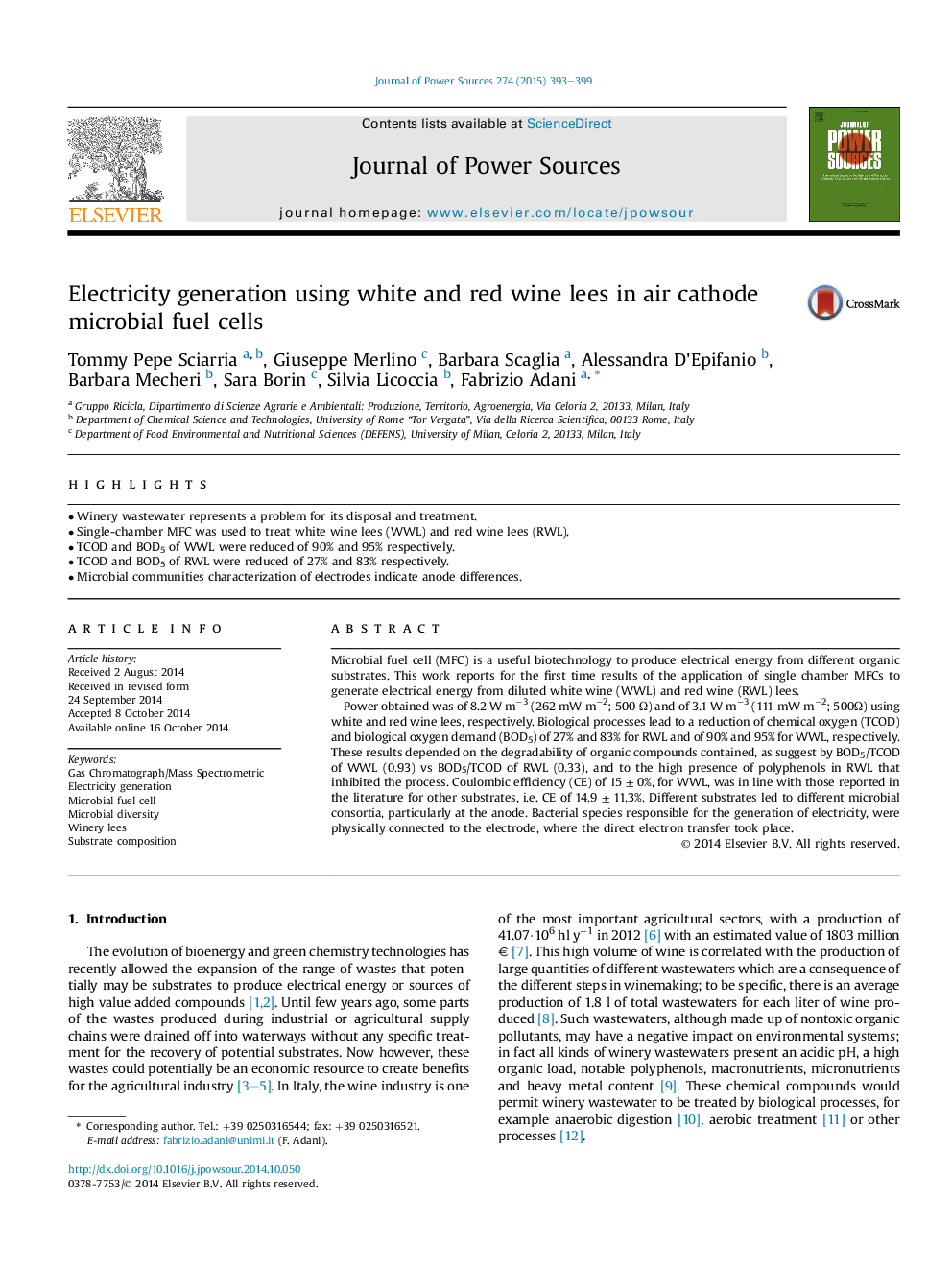| Article ID | Journal | Published Year | Pages | File Type |
|---|---|---|---|---|
| 7734209 | Journal of Power Sources | 2015 | 7 Pages |
Abstract
Power obtained was of 8.2 W mâ3 (262 mW mâ2; 500 Ω) and of 3.1 W mâ3 (111 mW mâ2; 500Ω) using white and red wine lees, respectively. Biological processes lead to a reduction of chemical oxygen (TCOD) and biological oxygen demand (BOD5) of 27% and 83% for RWL and of 90% and 95% for WWL, respectively. These results depended on the degradability of organic compounds contained, as suggest by BOD5/TCOD of WWL (0.93) vs BOD5/TCOD of RWL (0.33), and to the high presence of polyphenols in RWL that inhibited the process. Coulombic efficiency (CE) of 15 ± 0%, for WWL, was in line with those reported in the literature for other substrates, i.e. CE of 14.9 ± 11.3%. Different substrates led to different microbial consortia, particularly at the anode. Bacterial species responsible for the generation of electricity, were physically connected to the electrode, where the direct electron transfer took place.
Related Topics
Physical Sciences and Engineering
Chemistry
Electrochemistry
Authors
Tommy Pepe Sciarria, Giuseppe Merlino, Barbara Scaglia, Alessandra D'Epifanio, Barbara Mecheri, Sara Borin, Silvia Licoccia, Fabrizio Adani,
